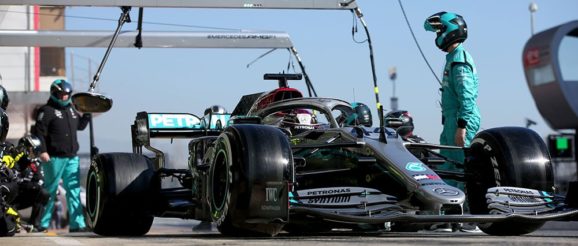Formula 1: Explaining Mercedes’ wild steering wheel innovation

Testing for the 2020 Formula 1 season began this week in Barcelona, and the defending world champion Mercedes team baffled fans and analysts on Tuesday by unveiling what could prove to be a revolutionary new steering system.
It was noticed on Lewis Hamilton’s onboard cameras that the driver was pulling back his steering wheel toward his body as he drove down the Circuit de Barcelona-Catalunya’s main straight, and pushing the wheel back into its normal position as he approached the first turn. Immediately, the F1 world went into a frenzy trying to decipher what Mercedes had developed, what the point of the new system may be, and even if it’s legal.
Mercedes have been somewhat vague about the applications of its new steering system, which is called “dual-axis steering,” or DAS, but the initial understanding is that DAS may allow the driver to alter the toe of the tire at certain points of the track.
Formula 1 are set up with some degree of toe-in or toe-out – the angle the tire sits upon the surface of the track. By triggering the DAS, the tire can adjust to allow the surface to contact the ground more evenly, which could help a driver control tire temperatures throughout the course of a race, or particularly, during a warm-up lap during qualifying. Former F1 driver Jolyon Palmer explained the system in a video you can watch on YouTube.
According to Mercedes technical director James Allison, the team has been in contact with the FIA about their development, and Mercedes believes that DAS is within the regulations. How much of a benefit will DAS provide? That remains to be seen – but it’s unlikely any other team will be able to copy the technology any time soon.
The first race of the Formula 1 season – the Australian Grand Prix – is under a month away on March 15th.

 Go to F1.com or visit the Official F1 app to find out why this is this talk of the paddock on the second day of #F1Testing
Go to F1.com or visit the Official F1 app to find out why this is this talk of the paddock on the second day of #F1Testing  #F1 #Formula1 #Motorsports #Mercedes #LewisHamilton #Innovation
#F1 #Formula1 #Motorsports #Mercedes #LewisHamilton #Innovation James has an update on today’s hot topic of @f1 Testing…
James has an update on today’s hot topic of @f1 Testing…